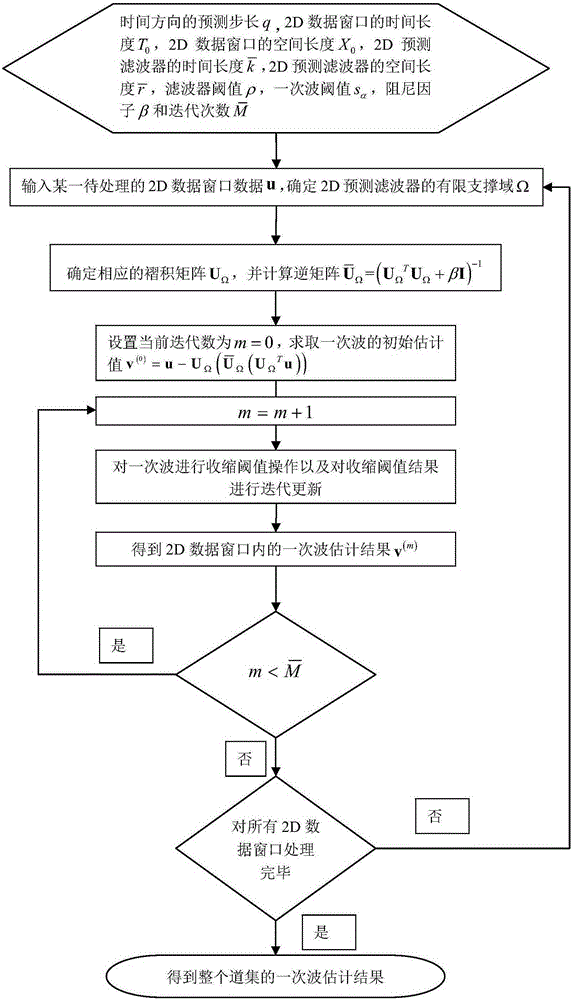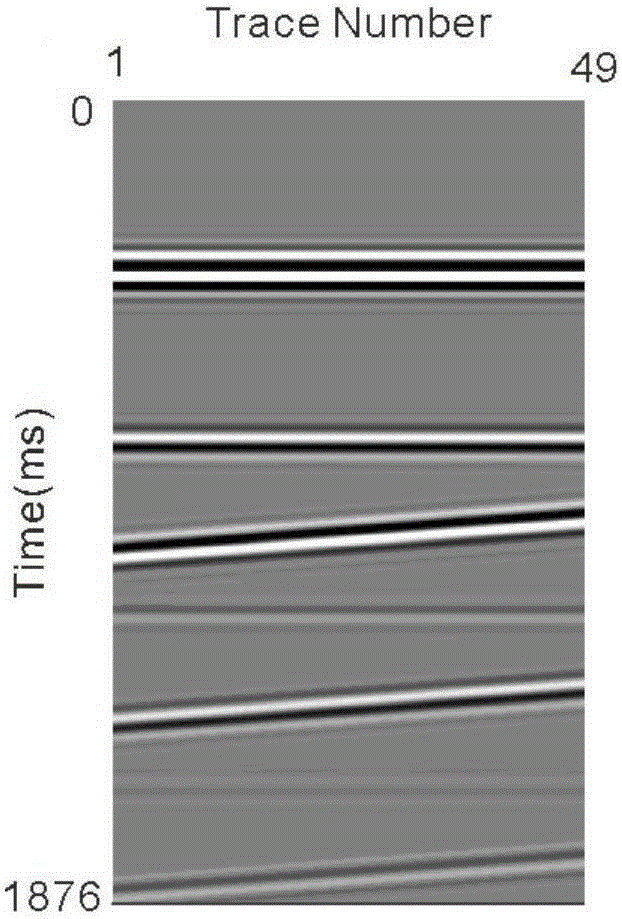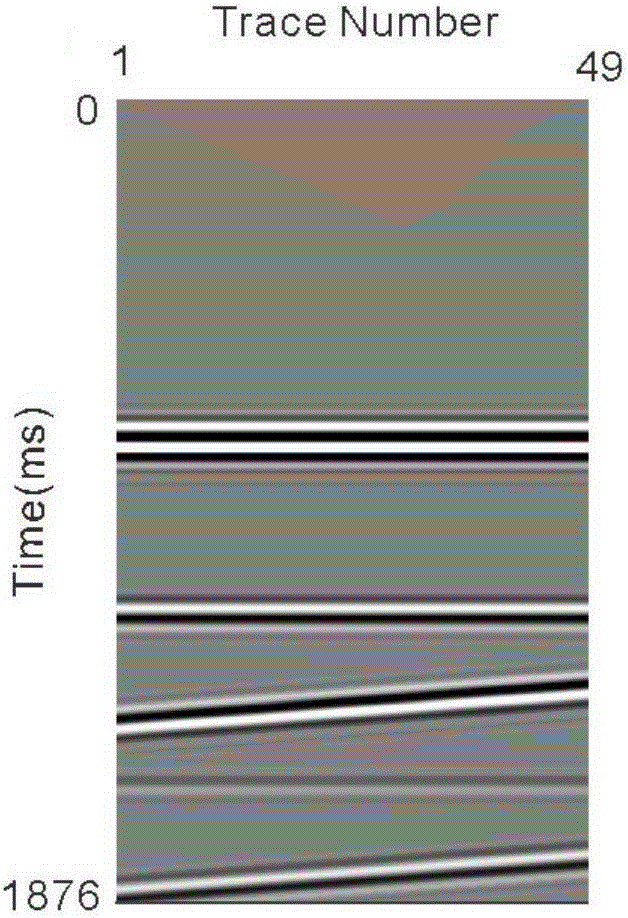Multichannel prediction deconvolution method based on primary wave sparsity constraint
A technology for predicting deconvolution and sparse constraints, applied in seismic signal processing, etc., can solve problems such as inability to effectively balance primary wave protection, multiple wave suppression, etc.
- Summary
- Abstract
- Description
- Claims
- Application Information
AI Technical Summary
Problems solved by technology
Method used
Image
Examples
Embodiment Construction
[0062] Basic thought of the present invention is:
[0063] Multiple wave suppression is performed one by one in 2D data windows. First, the limited support domain of the 2D prediction filter is determined, and then the corresponding convolution matrix and mathematical model are constructed, and an optimization problem that imposes sparse constraints on the primary waves is constructed:
[0064] arg m i n x Ω | | u - U Ω x Ω | | 1 ,
[0065] Among them, u is the original data, x Ω Contains only filter coefficients in the finite support domain, U Ω is the corresponding convolution matrix. Solve the optimization problem in the above formula to estimate the 2D prediction filter, realize the e...
PUM
 Login to View More
Login to View More Abstract
Description
Claims
Application Information
 Login to View More
Login to View More - R&D
- Intellectual Property
- Life Sciences
- Materials
- Tech Scout
- Unparalleled Data Quality
- Higher Quality Content
- 60% Fewer Hallucinations
Browse by: Latest US Patents, China's latest patents, Technical Efficacy Thesaurus, Application Domain, Technology Topic, Popular Technical Reports.
© 2025 PatSnap. All rights reserved.Legal|Privacy policy|Modern Slavery Act Transparency Statement|Sitemap|About US| Contact US: help@patsnap.com



